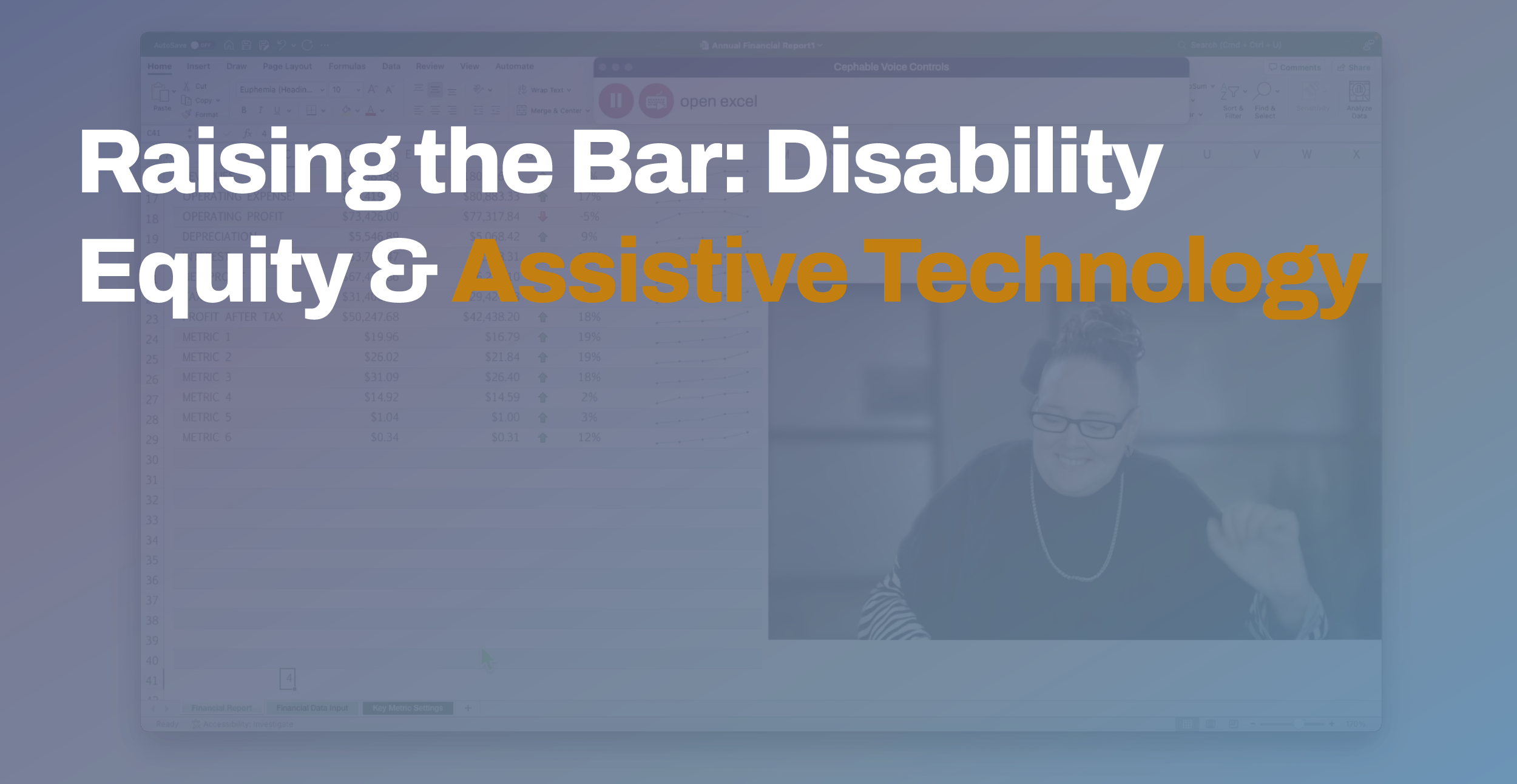October is National Disability Employment Awareness Month
October is National Disability Employment Awareness Month (NDEAM), a time to recognize the contributions of individuals with disabilities in the workforce and to promote their full inclusion. This year’s theme, “Access to Good Jobs for All,” reminds me of advocates and leaders like Hogan VanSickle, who exemplify the spirit of this campaign through her personal & professional dedication to disability equity.
Hogan, who became a quadriplegic in 2016, has channeled her lived experience into a career in law, focusing on advocating for disability rights. She recently graduated with her Juris Doctor (JD) degree from the University of Dayton and is an early champion of Cephable. She recently shared a quote about her experience taking the Bar exam. Her story is a testament to the importance of assistive technology for individuals to prepare for and secure employment and then advance in their careers.
Hogan VanSickle on the Power of Assistive Technology
“After I became a quadriplegic in 2016 at 34, I was determined to turn my experience into advocacy by pursuing a career in law, with a focus on disability rights. Law school required adaptable technology, and Cephable became my trusted companion but as the bar exam approached, I sought out a single solution that allowed me to operate voice dictation and mouse movement simulation wholly independent of an internet connection. Cephable was the only system that checked all the boxes, offering a seamless experience that enabled me to focus on passing the exam the first time—without any tech-related barriers or concerns.
Cephable’s offline capabilities allowed me to study, practice, and perform in exam conditions without worrying about internet connectivity. Its voice dictation and head movement/gesture recognition made it possible for me to control my computer seamlessly. The technology simulated mouse movements and clicks, meaning that I could navigate complex legal material, organize my thoughts, and execute tasks with precision—all without the use of my hands.
For me, passing the bar wasn’t just about mastering legal concepts; it was about having the right tools to eliminate the barriers that could have stood in the way. Cephable empowered me to focus on the exam, not the technology. For anyone navigating accessibility challenges, especially in education or professional pursuits, Cephable is proof that technology can bridge the gap, allowing us to meet our goals head-on. It was integral to my success, and I’m excited to see how it continues to transform lives, just as it transformed mine.”
Hogan’s success serves as an inspiration for anyone navigating accessibility challenges, particularly in education and employment. She highlights how personalized assistive technology enables individuals to concentrate on their actual work and goals rather than their tech, marking a significant stride towards disability equity.
As we celebrate NDEAM, let’s elevate the conversation around accessibility, celebrating both individual accomplishments and the workplace supports that make them possible.
“For anyone navigating accessibility challenges, especially in education or professional pursuits, Cephable is proof that technology can bridge the gap, allowing us to meet our goals head-on.”
Subscribe to Our Newsletter
Subscribe to our InkSights newsletter for updates, the latest innovations in AT, community announcements, and more!

